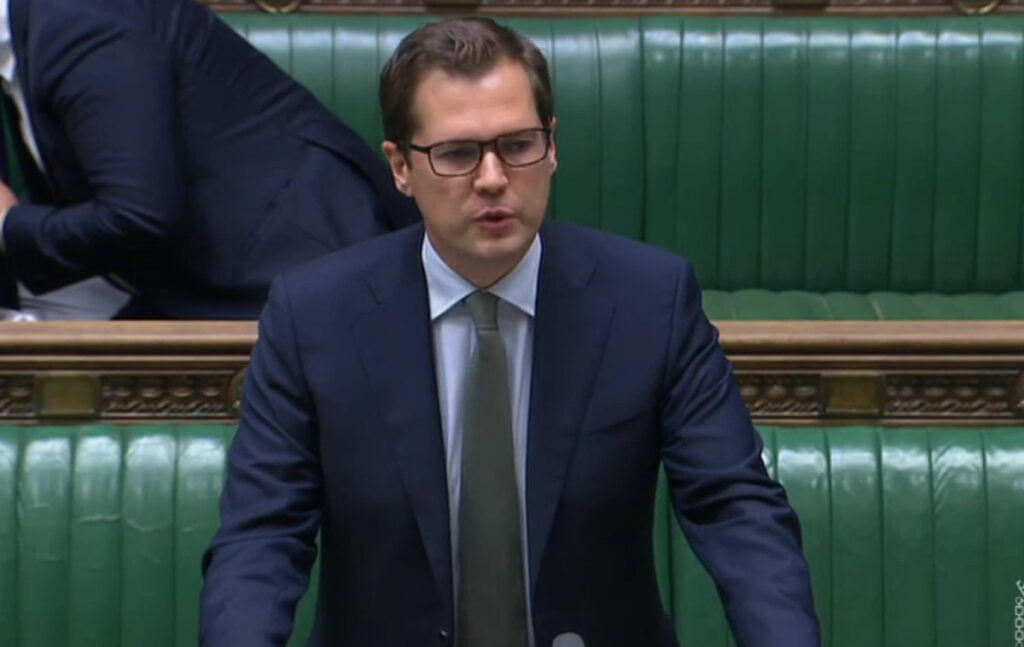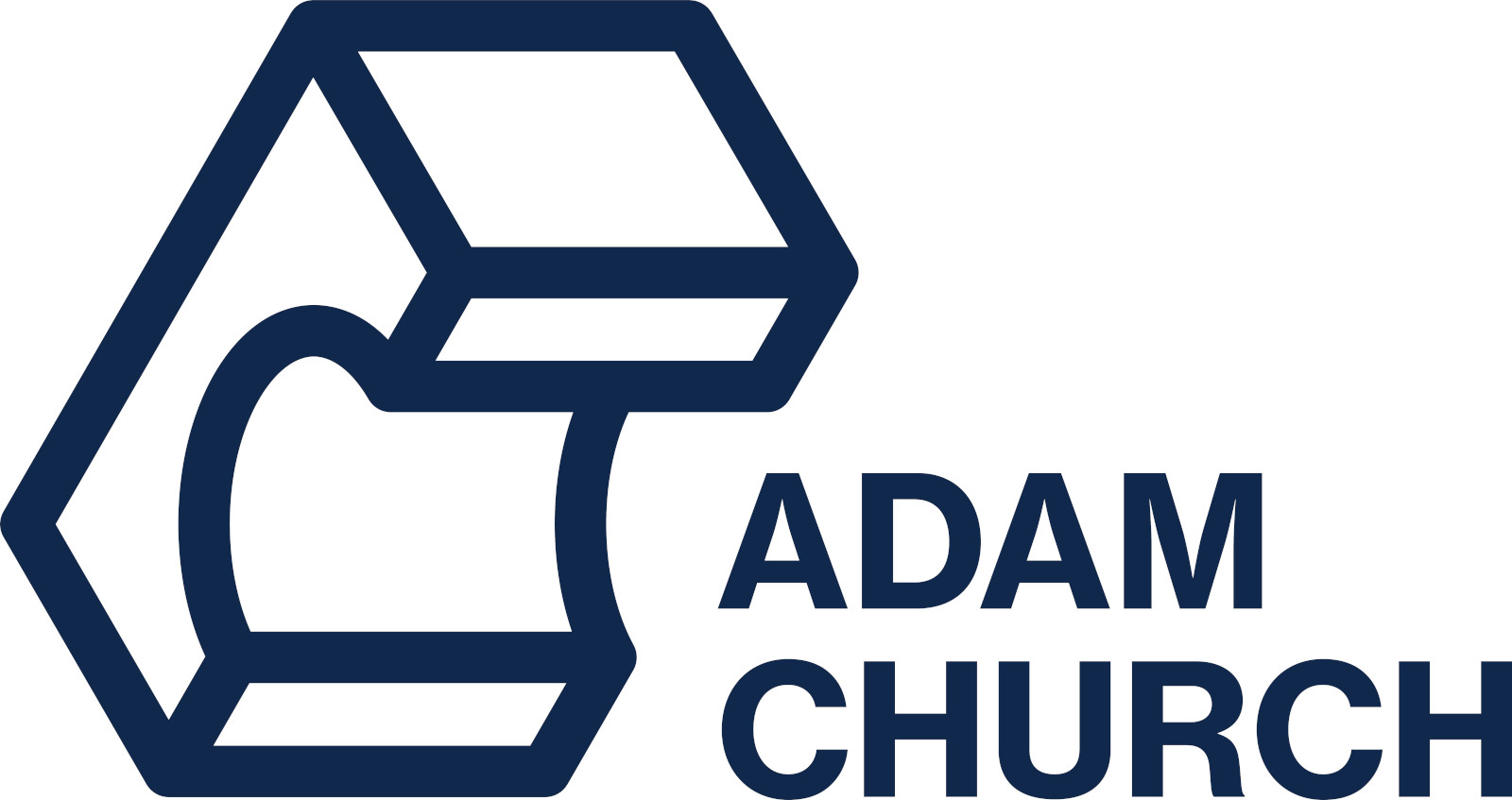

Liam Spender is a Trustee of the Leasehold Knowledge Partnership. Personally affected by the cladding scandal, Liam is a Solicitor-Advocate and Senior Associate at Velitor Law practising commercial litigation and arbitration in the City of London. Views in this article are personal and do not constitute legal advice. Liam is unable to take individual cases or to give legal advice to individuals.
Watching the Second Reading of the Building Safety Bill in the House of Commons last week reminded me of Alice in Wonderland. In particular, the exchange between Alice and the Cheshire Cat.
In one memorable exchange in the book, Alice asks the grinning Cheshire Cat where she should go next:

“Cheshire Puss,” she began, rather timidly, as she did not at all know whether it would like the name: however, it only grinned a little wider. “Come, it’s pleased so far,” thought Alice, and she went on. “Would you tell me, please, which way I ought to go from here?”
“That depends a good deal on where you want to get to,” said the Cat.
“I don’t much care where—” said Alice.
“Then it doesn’t matter which way you go,” said the Cat.
“—so long as I get somewhere,” Alice added as an explanation.
“Oh, you’re sure to do that,” said the Cat, “if you only walk long enough.”
That idea of setting off on a journey with no fixed destination and only a willingness to walk far enough neatly sums up the government’s approach to the Building Safety Bill.
On 21 July 2021 the government promised MPs that the new regime to be brought in by this new law would be “proportionate” and would end “market failure” the government believes has affected the housing market since Grenfell.
Of course, as the LKP has covered in previous posts (here: https://www.leaseholdknowledge.com/building-safety-bill-is-a-device-for-which-the-batteries-arent-included-it-could-be-improved-if-only-officials-would-listen/
And here:
The Bill, in fact, does not contain any such proportionality obligations on its face.
Any proportionality will be introduced, if at all and at best, via principles the new Building Safety Regulator is obliged to follow. Those principles will be introduced by secondary legislation.
So far as any of us know, that secondary legislation has yet to be written and is unlikely to be scrutinised in any detail by Parliament. There can be no guarantee that the Bill will produce any proportionate results.
That is one of the many problems with the Bill, the fact that the precise scope of so many of its new powers are left to officials to decide later, via Statutory Instrument and without much in the way of Parliamentary oversight. The last time Parliament rejected a Statutory Instrument was in 1978.
Indeed, one obvious flaw in the Bill is that there is no express requirement for there to be a bespoke regime for existing buildings. That is being left to the better angels of the Civil Service’s nature to sort out. It may yet be the case that leaseholders in existing buildings find themselves with all sorts of costs to meet new standards imposed upon them retrospectively, however proportionate for new buildings they may be.
In light of the daily drip feed of damning evidence emerging from the Grenfell Tower inquiry, it also remains to be seen how effective creating a new regulator armed with a vast new rule book will be in relation to future building safety matters.
A central cause of the Grenfell Tower fire in 2017 increasingly seems to be not an absence of rules, however inadequate, but that the rules in place were not followed. Some rules appear to have been avoided creatively so as to spare effort and expense on the part of those avoiding them. Every party involved in the refurbishment passed responsibility to another, or assumed it could, to ensure compliance, however loose, with the rules that were in place.
It is not clear at all that imposing a fresh set of new rules, as the Building Safety Bill does, will do anything to bring about the fundamental changes required in the building industry, or to prevent a future Grenfell.
Chief among those changes is a desire to produce buildings that are actually habitable safely without ruinous expense to their occupants caused by the need to do works that should have been done during construction.
Grim debate for the government
In the course of the nearly four hours and more than 50 speakers at Second Reading, perhaps only a single Conservative speaker welcomed the Bill unconditionally.
It was quite striking that, unlike the debates over the Fire Safety Bill earlier this year, the government seemed to have few open supporters of its position on the backbenches. It may have been the luck of the draw caused by MPs needing to ballot for a spot to speak in the debate.
One government backbencher, himself a former firefighter, Sir Mike Penning referred explicitly to the fact that he had been persuaded by government promises not to back amendments to the Fire Safety Bill, only to find those promises broken. Sir Mike said this had hardened his resolve to back amendments to the Bill this time around.
Other ambitious Conservative backbench speakers referred diplomatically to other aspects of building safety that needed to be addressed, such as electrical safety, timber frame construction and ensuring adequate escape stairways, to avoid direct criticism of the government.
The three co-chairs of the All-Party Parliament Group on Commonhold and Leasehold Reform, Sir Peter Bottomley, Justin Madders and Daisy Cooper all spoke during the debate.
Sir Peter called for the government to go further to protect leaseholders, including by changing limitation rules for building defect claims so they were based on knowledge rather than the date of completion.
Other prominent supporters of leaseholders from across the parties also spoke during the debate. Chief among them were Stephen McPartland, Royston Smith, Bob Blackman, Robert Neill, Hilary Benn, Florence Eshalomi, Paul Blomfield, Barry Gardiner, Matthew Pennycook and a host of others.
No government whip watching the cold reception from government backbenchers during the debate could have felt sure that the Bill was going to have an easy ride through Parliament. Conservative backbenchers in the House of Lords appear equally as disdainful of the government’s approach to the issue of cladding and fire safety.
Even The Spectator, long regarded as the house journal of the Conservative party,these days talks of leasehold reform and the leasehold vote having the potential to split the party.
It is curious that a party badging itself as one favouring home ownership and home owners, and professing to believe in a free market, can stand by idly when in the words of Stephen McPartland MP leaseholders are “screaming in pain” at what home ownership and a free market have done to them.
“No, no!” said the Queen. “Sentence first—verdict afterwards.”
The Second Reading debate itself began shambolically
Part way through his opening speech Robert Jenrick casually mentioned that a written statement had been laid to make radical reforms to the assessment of fire safety risks in buildings under 18 metres. This was said to be supported by new expert evidence on fire risks in those buildings.
MPs inside and outside the Commons chamber were dumbfounded and furious to find they had not been given a copy of the statement in advance. It was not on the table in the chamber. A copy was nowhere to be seen in the Vote Office. It was not on the Hansard website, so MPs participating virtually could not see it. The acrid smell of burning backbencher goodwill doubtless hung in the air for some days after.
The minister claimed that the statement had been delayed until he rose to speak because it was one containing market sensitive information. That was a curious excuse. More curious still, given that market sensitive information is normally announced while the markets are closed, the minister was speaking while markets were still open.
The principle of not releasing market sensitive information while the markets are open is a simple one. Traders busy trading may not see the news. Traders who do see the news will have an unfair advantage and may be able to profit from knowing something other traders do not. Releasing sensitive information when markets are closed removes that so-called arbitrage advantage.
Most curious of all is the fact that the department then issued a press release setting out the content of the written statement and the Independent Expert Statement featuring quotes from three lenders: Barclays, HSBC and Lloyds.
Each of the three lenders is listed on the London Stock Exchange. As listed companies they are each bound by the Disclosure and Transparency Rules. Those rules require listed companies to disclose to the market, via a Regulatory News Service, any information that is “likely to have a significant effect on the price of financial instruments”.
That is, in general terms, unless there is a legitimate interest to be protected by not disclosing the information, or another substantial reason for delaying publication.
None of the three mortgage lenders has made any such statement to the market, on or after 21 July. That is a strong indication that the lenders did not regard their quotes in the press release welcoming the announcement, in turn indicating they were aware of it before it was published, as likely to significantly affect the prices of their quoted securities.
The reason for the disparate approaches taken by the lenders and the government to the same statement may be explained by some mismatch in the thinking or the rules. Regardless of the reason, the high-handed approach of making a written statement while opening a debate left an unfavourable impression inside and outside Parliament.
The written statement is here:
https://questions-statements.parliament.uk/written-statements/detail/2021-07-21/hcws228
The Independent Expert Statement is here:
Independent Expert Statement: is it commanding pigs to fly or trying to put the toothpaste back in the tube?
In simple summary, the Independent Expert Statement says that the fire incident data shows that the risk of fires in buildings under 18 metres is sufficiently low to justify a much less invasive approach to managing risk. The new statement recommends risk mitigation measures (presumably meaning fire alarms or sprinklers) rather than ripping off cladding, as appeared to be the government’s previous position.
This Statement is the latest in a long line of extra-statutory advice given by the government since June 2017. This culminated with the Consolidated Advice Note issued in January 2020, which required all buildings of any height with any cladding to be assessed for fire safety risk:
See here:
Extra-statutory guidance and its role in relation to the Building Safety scandal – Part 1: Advice Notes
It soon become clear following the Grenfell Tower fire that many other high-rise residential buildings with cladding were also at risk. The government’s response has been to seek to make buildings safe by issuing instructions to building owners through extra-statutory advice notes (the “Advice Notes”).
And here:
This manoeuvre is nothing new from the government. It attempted the same thing in November 2020 when it said that it had revised the January 2020 Consolidated Advice note to make it less harsh on lower-rise and mid-rise buildings. That eventually led to a revised EWS-1 form, launched in March 2021, which appears to have made no practical difference to the market.
The statement is an Olympian feat of U-turnery in the face of what the government calls a “market failure”.
Of course, to an economist, a market failure is something quite different. Economists believe that ordinarily the interaction of supply and demand produces a price that results in an optimal allocation of scare resources. To an economist, a market failure occurs for many reasons, such as when a market does not provide enough goods or services to satisfy society’s expectations, or when a market is missing altogether, or when the market is not pricing goods and services at a level reflecting true costs (for example, by failing to factor in costs imposed by pollution).
In this case, the market itself has not produced a situation where flats have become more difficult, if not impossible, to sell and insure. The government’s own interventions through its Advice Notes have caused this situation.
Normally when there is a case of market failure, the government steps in and acts. Early examples include laws banning sending small children up chimneys and requiring them to go to school instead. Imposing carbon prices as part of an emissions trading scheme and increasing taxes on diesel are two examples of modern interventions to address market failure.
In this case, despite diagnosing a market failure, the government is not stepping in. It is leaving it to the same failed market to come up with a solution based on a pronouncement about what the government thinks should be happening.
As with the November 2020 intervention, that is no use at all to buildings that have already been classed as failing safety standards established by the government’s previous Advice Notes.
There is vigorous debate about whether the Independent Expert Statement is actually backed by robust evidence. The table of figures presented in the Independent Expert Statement itself in fact shows a higher incidence of fires in buildings below 18 metres compared to buildings above 18 metres.
A paper produced by the University of Leeds following the Second Reading of the Bill says risks in buildings between 11-18 metres are much higher than those assumed by the government:
https://www.safe-as-houses.org/post/new-research-on-fire-risks-to-high-rise-blocks-of-flats?s=09
Leaving the important issues above to one side, unfortunately, the effect of the government’s latest statement has so far been negligible. Mortgage lenders and the property valuers say they will not change their position until the Consolidated Advice Note is formally replaced with different guidance.
UK Finance and the Building Societies Association, the representative bodies for mortgage lenders, say that they will need the Royal Institution of Chartered Surveyors (RICS) to change its guidance:
https://www.ukfinance.org.uk/press/press-releases/uk-finance-and-bsa-issue-joint-comment-cladding)
RICS, in turn, says it will need to go through its lengthy internal consultation process before it will change its guidance:
The Association of British Insurers has so far not said anything publicly in response to the government’s announcement last week.
Until mortgage lenders, property valuers and insurers all agree on a common definition of risk and how they will approach it, nothing is likely to change in the housing market generally, or for leaseholders in particular.
PAS 9980: help or hindrance?
The Independent Expert Statement and the written statement of 21 July refer to the eventual “retirement” of the January 2020 Consolidated Advice Note. The guidance in that note is to be replaced by a new British Standard called PAS 9980.
PAS 9980 was published in draft in April 2021. The draft runs to 183 pages. Something that long will take time to filter through into the market. It will need to be applied to real life situations in real life buildings to know its effect.
It is unknown what the practical effect of PAS 9980 will be. The fundamental difficulty is that while PAS 9980 adopts a much more sophisticated, nuanced approach to the assessment of risk than the EWS1 process, it still leaves the issue of whether the building is to marked as compliant or not to each individual assessor’s judgment.
The government promises that these judgments will be moderated by means of guidance from the shadow Building Safety Regulator.
That implies some sort of process similar to that employed when marking exam papers, in an attempt to avoid some examiners being harder or softer than others. Exams are serious, but decisions about whether leaseholders are going to be presented with huge bills more so. It is unknown in practice what any moderation process will entail.
What seems clear is that the Independent Expert Statement is another promise of jam tomorrow. No-one can say with certainty whether it will be better or worse than the Consolidated Advice Note.
It is also another example of the government passing responsibility to people in the private sector with competing, and sometimes vested, interests. That approach is shown to have failed, to be point that the government itself accepts is “market failure”. Repeating the same process and expecting different results is one definition of insanity.
Fire Safety Risk Assessors will continue to have one eye on the cost and scarcity of professional indemnity insurance for their work when assessing external walls.
Some other commercial outfits, most notably the managing agents ordering the assessments, or businesses that bundle up risk assessment with remediation services, will have a vested interest in recommending as much work as possible at someone else’s expense, ie that of leaseholders.
The Fire Safety Act 2021
Regardless of what happens to the Consolidated Advice Note or whether PAS 9980 helps, one thing that is certain is that eventually every building in England containing two or more sets of domestic premises is going to have its external walls checked annually for fire safety.
Why? That is because the Fire Safety Act 2021 amends Article xx of the Regulatory Reform (Fire Safety) Order 2005 to make it a legal requirement.
It appears to be the government’s intention that these inspections will be carried out in accordance with the PAS 9980 guidance. How good PAS 9980 is at determining risk will therefore be critical to determining what effect the Fire Safety Act has in practice.
A further issue is that assessing every single building containing two or more sets of domestic premises to a new standard will require significant manpower. If that manpower is not available, it seems that the price of such assessments may rise rapidly as more and more buildings stoke demand for scarce services.
The rest of this article considers some Frequently Asked Questions on the Bill and the next stages of Parliamentary scrutiny.
What happens next?
Parliament is on its Summer recess until 6 September 2021.
The Building Safety Bill is to be considered at a Public Bill Committee. This stage will last until no later than 26 October 2021.
The Public Bill Committee is expected to meet for the first time on 9 September 2021. Its membership is currently unknown.
What is a Public Bill Committee?
A Public Bill Committee considers in detail a law that affects everyone. The committee is formed specifically to consider one Bill.
Public Bill Committees for Bills of this type typically have 16 or 17 members. The political balance of the committee reflects the political balance of the House of Commons. Normally this means there will be a membership of 10 Conservatives, 5 Labour and 1 to 2 members from the SNP, Liberal Democrats or one of the other parties represented in the Commons.
One of the Conservative members will be a minister responsible for the Bill, usually a junior minister (not in the Cabinet). The Labour Party has announced that Mike Amesbury will be leading for Labour at Committee stage.
The Committee will be chaired by two MPs chosen by the Speaker from the Panel of Chairs. Normally there will be one Conservative chair and one Labour chair.
The chair will not have a vote unless the committee is tied, which is very unlikely given the overwhelming government majority.
The Public Bill Committee’s work will be published on its website here:
https://committees.parliament.uk/committee/535/building-safety-bill/
Who can put in evidence?
Anyone can put in evidence to the Public Bill Committee.
The evidence will only be considered in relation to the parts of the Bill, or the amendments to the Bill, being considered by the Committee at the time.
Further details on how to put in evidence are here:
https://www.parliament.uk/business/news/2021/july/have-your-say-on-the-building-safety-bill/
What about amendments to the Bill?
Stephen McPartland and Royston Smith, who led opposition to the Fire Safety Bill in the Commons, have already tabled amendments to the Building Safety Bill.
In broad terms, the latest McPartland-Smith amendments deal with VAT on remediation works, extension of the Housing Defects Act 1984 to cladding and fire safety issues, creation of a indemnity fund to cover cladding and fire safety defects and better legal protection for future buyers of houses and flats.
The latest McPartland-Smith amendments are here:
https://publications.parliament.uk/pa/bills/cbill/58-02/0139/amend/Building_rm_pbc_0723.pdf
An explainer of more of the detail about the McPartland-Smith amendments is here:
Building Safety Bill: McPartland-Smith Amendments – End Our Cladding Scandal
This is a guide to the McPartland-Smith amendments to the Building Safety Bill, as at 27 July 2021. We recommend that you read it together with the amendments. Many thanks to Liam Spender for providing this helpful summary. The Building Safety Bill is a wide-ranging reform of the rules around planning, construction and occupation of “higher-risk buildings”.
Will any amendments be passed at Committee stage?
Given the make-up of the Committee, no amendment will be passed unless the government supports it.
When the Bill returns to the Commons at Report Stage and Third Reading, there may be an opportunity to try to make further amendments.
That is subject to the important qualification that the Bill has been programmed (i.e. set on a particular timetable by the government). Amendments to programmed bills will only be considered by the Commons if they are moved by a government minister, as we saw during the Fire Safety Bill.
The best chance to amend the Bill may come when it reaches the House of Lords later this year. That is because the current government does not have a majority there and it is generally easier to amend bills in the Lords because the procedural rules are not as tightly drawn in favour of the government.
You can read more about these detailed Commons procedural rules here:
https://guidetoprocedure.parliament.uk/collections/h0idqNI2/amendments
What happens when the Committee stage is finished?
The Bill will be reported back to the House of Commons, together with any changes. The Commons will consider and vote at Report stage. The Bill will then have a Third Reading, which is normally a formality.
After that, the Bill will be sent to the House of Lords where it will undergo further consideration and, most likely, amendments.
Both Houses of Parliament must agree on the same text of every Bill. If there is any disagreement by the time the Lords finishes scrutinising the Bill, then it will go backwards and forwards between the two Houses, as we saw with the Fire Safety Bill, until it is agreed or one House backs down.
The Scottish question
Earlier in July, English Votes for English Laws rules were abolished. The rules used to prevent Welsh, Scottish and Northern Irish MPs from voting on laws that only affected England. The idea being that there was no separate English Parliament, but there were separate legislative bodies for the other countries within the United Kingdom, so English MPs should be the only ones deciding on English-only laws.
The abolition of those rules now means that the government can be defeated if 42 Conservative MPs, as opposed to something closer to 90 Conservative MPs under the old rules, vote against their party.
Some of the votes in the Commons on the Fire Safety Bill in April 2021 came close to that magic 42 number.
Theoretically, Scottish MPs can now vote on the Building Safety Bill. They have reason to do so as the amendments to building product safety certification apply across the United Kingdom.
But do Scottish MPs – overwhelmingly drawn from the Scottish National Party – have any political reason to interfere in a Bill that mostly applies to England and Wales?
The only political reason for Scottish MPs to interfere would be if there were a significant number of Conservative rebels, close to the magic number of 42, lined up against the Bill.
Then the Scottish Nationalists may consider it is worth stepping in to try and defeat a government that is not well liked in Scotland, even though that would be met with accusations of hypocrisy for interfering in an English (or English and Welsh only) matter.
The bottom line?
The Building Safety Bill is of critical importance to all leaseholders everywhere, not just those living in buildings affected by it.
Will the government finally see sense and act to protect leaseholders from the mistakes of failed regulation and the building industry? Will the government act to protect future flat buyers and house purchasers? These are but two of the many questions we will need answering in the coming months.
Only if the pressure on the government continues will leaseholders interests be listened to and protected. Please join the rally on 16 September 2021 in Parliament Square if you can.
We will continue to report on the bill as it proceeds through Parliament.





 Blatant pro-landlord loophole left in the Ground Rent Bill. Is this the way leasehold ‘reforms’ will go?
Blatant pro-landlord loophole left in the Ground Rent Bill. Is this the way leasehold ‘reforms’ will go?






















In Liam’s post he asks in his concluding remarks…”Will the government finally see sense and act to protect leaseholders from the mistakes of failed regulation and the building industry? Will the government act to protect future flat buyers and house purchasers? These are but two of the many questions we will need answering in the coming months
I heard a new term today, and thought it very apt to the situation mentioned above….I don’t think I need elucidate any further what with the Financial Times writing about Tory donors.
The new term? …… Quockerwodger – A wooden puppet controlled by strings. The term QUOCKERWODGER, although referring to a wooden toy figure which jerks its limbs about when pulled by a string, has been supplemented with a political meaning. A pseudo-politician, one whose strings of action are pulled by somebody else, is now often termed a QUOCKERWODGER.
Very well assessed, summarised and put and not the only housing market to which the QUCKWODGER tag can be attached.
How much longer will this agony for leaseholders go on? My daughter is one of the leaseholders affected by a) yet to be done cladding replacement and despite the management agents saying they applied for the government funding last year, they say the government still hasn’t agreed it b) In April, after a year of paying for Waking Watch, an alarm system was put in. It has yet to be commissioned as not enough fire sensors were ordered, so my daughter continues to have to pay for WW, which isn’t fit for purpose. c) She will have to find the cost of replacement of wooden balconies, missing fire walls, etc, as there is no government funding for these. It is scandalous that construction companies and building owners get away with these blatant failures to keep people safe in their homes, without having to pay a penny for the remediation work, which has taken far too long to put in place. Instead of home-ownership being a dream it is now my daughter’s worst nightmare.